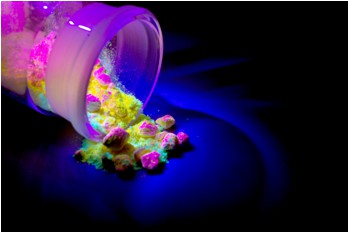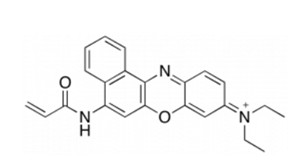Fluorescent Acrylic Monomers
- CAS Number: 1821380-54-4
- Molecular Weight: 652.2
- Molecular Formula: C34H38N3O6S . Cl
- CAS Number: 206444-58-8
- Molecular Weight: 468.45
- Molecular Formula: C28H20O7
- CAS Number: 2089099-00-1
- Molecular Weight: 408
- Molecular Formula: C23H22N3O2CI
- CAS Number: 669775-30-8
- Molecular Weight: 666.2
- Molecular Formula: C35H40N3O6S . Cl
Introduction

Fluorescent molecules and nanomaterials have received increasing attention for their potential applications in sensing, imaging and biomedicine. Dispersing organic fluorescent pigments in acrylic resins can make fluorescent coatings with better weathering and gloss retention. Dispersing fluorescent pigment emulsions directly in acrylic monomers can also make fluorescent coatings with wider application range and better performance. Currently, the migration and diffusion of polymers have been studied using fluorescent labeling. Acrylic monomers with fluorescent tags can be used to detect very low concentrations of polymers by fluorescence spectroscopy. In addition, polymer microspheres containing fluorophores are commonly used in flow cytometry and medical diagnostic analysis.
Common Fluorescent Acrylic Monomers

Nile blue dye is a fluorescent dye commonly used in histology to render cell nuclei blue, which is used to distinguish between pink neutral lipids (triglycerides, etc.) and blue stained fatty acids. Currently, nile blue acrylamide has been used to covalently link the nile blue dye into the backbone of polymers for various sensor applications.
Methacrylamide is an organic compound with the molecular formula C4H7NO. Nile blue methacrylamide is mainly used in the production of fluorescent methyl methacrylate, and the synthesis of polymer compounds.
Performance Research
- Infrared Spectroscopy. Based on the wide application of fluorescent acrylic monomers, its infrared spectrum can be tested by Fourier transform infrared spectroscopy using potassium bromide pressure method.
- Optical Performance Evaluation. When the excitation intensity, wavelength, solvent and temperature are constant, by measuring the relationship between the relative fluorescence intensity and mass concentration of the fluorescent acrylic monomer, it can be judged whether the concentration of fluorescent acrylic monomers has a good linear relationship with its fluorescence intensity, so it can be used for quantitative analysis. In routine quantitative fluorescence analysis, the fluorescence intensity must be proportional to the measured components and have good reproducibility.
If you are interested in our fluorescent acrylic monomers, please contact us immediately!




















